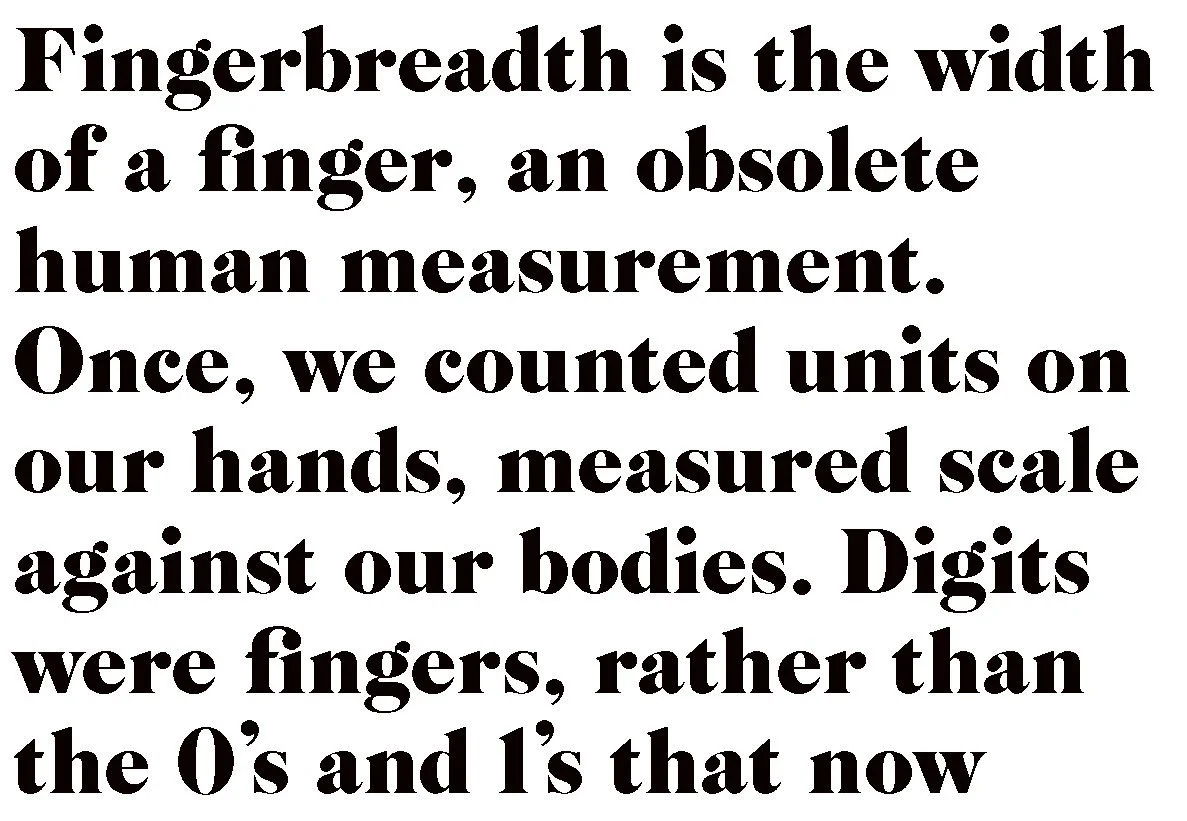Kate Tucker
Fingerbreadth (2023)
artist statement
Fingerbreadth is the width of a finger, an obsolete human measurement. Once, we counted units on our hands, measured scale against our bodies. Digits were fingers, rather than the 0’s and 1’s that now form the foundation of digital technology. Today, standardised rules eradicate ambiguity and we are accustomed to pressure for precision. We are preoccupied with machine learning, which promises us progress through hyper efficiency, delivering back to us a kind of random, rolling summary of ourselves. There is a fear that in outsourcing too much, we risk degrading our humanity. Perhaps this implies that our value could be located somewhere inside the inefficiency of the labour processes we are attempting to phase out. Ironically, I recently read that artificial intelligence can’t configure enough universal rules in its data set to accurately depict human hands. I often reference images from vintage DIY craft and construction books, of people making things. I too, am trawling through data in an attempt to locate that which is shared and universal. In these grainy photos of hands printing cloth, reupholstering chairs and cutting wood, are the unmeasurable facets of who we are.
Our contact with the handmade is often mediated by a screen, where we must fall back on previous inputs around the history of materials and make assumptions about scale and texture. My works reveal far more in person, reject purity and challenge definition, in order to slow the exchange of ‘information’ with the viewer. They are recognisably anchored in the physicality of making, but I aim to shift each element both towards and away from its context, forming a mass of rules which are set, then disrupted. In the paintings, various elements aggregate intuitively, presenting a cross section of layers that don’t make chronological sense. Visible inside layers expose and make solid the process, allowing glimpses of abandoned directions. The inside of the work is more than a support and the surface rejects finality, everything completed is a potential beginning. I take photos of work in progress, print them onto fabric and paste them back into the work. With every flattened layer, there is also an expansion of form.
Ceramic bases hold and support the paintings, with the content of each part informed by the other. The ceramics borrow painterly effects and the paintings are slab like, they lean toward each other. They derive from a kind of loop between mind and hand as I negotiate the conundrum of making physical things from a digital headspace.
The elevations are an intermediary between the hybrid sculptures and the space they inhabit. They draw on the structures and materials of the studio, symbolically elevating the other works. A wariness around consumption is a useful constraint, as parts of failed and abandoned works are absorbed rather than discarded and replaced.
The hybrids vary widely in size, as though the scale tool has been used in Photoshop. This flippant rejection of uniformity is also a play on the arbitrary nature of measurement. I am often perplexed by how value is determined within a creative act. It seems that the parts of existing as an artist that are hardest to measure are often the most important. The unproductive gaps, the emotional and intellectual terrain that there is not time to reveal, the many invisible networks of support required.
The works form a relationship of mutual support, finding a sense of completion as part of a community. They embody a kind of material empathy. They are both constrained by the physical limitations of my body, and liberated by the unmediated connection between mind and material, via the hand. Each work has developed through gradual accretion, embedding a sense of thoughtful quietness implied by solo, manual labour. Together the works pose a question which I am then moved to answer; they are defined by their contribution to the continuum of practice.
- Kate Tucker, 2023

